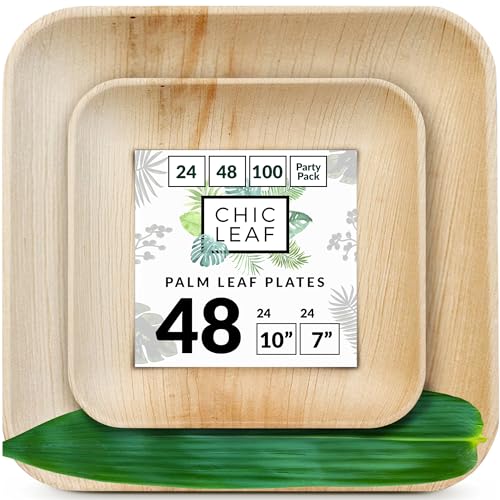Biodegradable plates are an environmentally friendly alternative to traditional plastic or Styrofoam plates. They are made from plant-based materials such as bamboo, sugar cane fiber, cornstarch, and wheat straw. These materials decompose naturally, breaking down into their component parts and returning to the Earth without leaving behind any harmful residue.
They can completely disintegrate within a year or even less, depending on environmental conditions. Additionally, biodegradable plates have a much lower carbon footprint than traditional disposable options since they do not require the use of fossil fuels during production.
Things to Consider When Buying Biodegradable Plates
Materials and food type
Look for plates made from organic, sustainable materials such as bamboo, sugar cane, or vegetable-starch-based bioplastics. Make sure the materials are strong enough to survive regular use while still being compostable. The temperature resistance of the material should also be taken into account to prevent any warping or cracking when exposed to hot or cold temperatures.
Compostability
Ensure that the plate will break down easily in compost piles, leaving no toxic residues behind. Keep in mind that some bioplastics may take longer to decompose than other materials, such as sugar cane or bamboo.
Microwave-safeness
Confirm that the plates can be used in microwaves without melting or releasing any toxins into food. This will ensure that your food remains safe and toxin-free while heating up meals.
Size
Choose a plate size that best suits your needs and capacity requirements. For example, portion-control plates are generally longer and narrower than standard dinner plates.
Design
Decide if the plate has a design or color that will match the look and feel of your event or meal presentation. The colors should also be chosen based on durability, as those with lighter colors may require more frequent cleaning than darker colors.
Recyclability
While not all biodegradables are guaranteed to break down in compost piles or other waste management systems, it’s still beneficial to check if they can be recycled or repurposed afterward if needed.
Storage and Maintenance of Biodegradable Plates
Keep them in a dry and cool area, away from direct sunlight. If plates are going to be stored for an extended period of time, they should be kept in air-tight, waterproof containers to prevent moisture buildup, which can lead to the breakdown of the plate material.
When cleaning biodegradable plates, it is crucial to avoid harsh or abrasive materials as they may damage the plate's integrity. Instead, warm water and mild soap should be used, or even just a damp cloth should be sufficient. The plates should also be dried completely afterward so that any remnants of moisture do not seep into the material and cause it to break down prematurely.
Benefits of Using Biodegradable Plates
- These plates are made from sustainable materials, which makes them completely compostable and safe for the planet.
- Not only do biodegradable plates reduce waste in landfills and conserve resources, but they also help to minimize the risk of chemical pollution caused by traditional plastic plates.
- They provide a cost-effective solution for businesses to use in food service settings.
- These plates are microwave-safe and light enough to be disposable after each use which makes them easy to store and transport.





